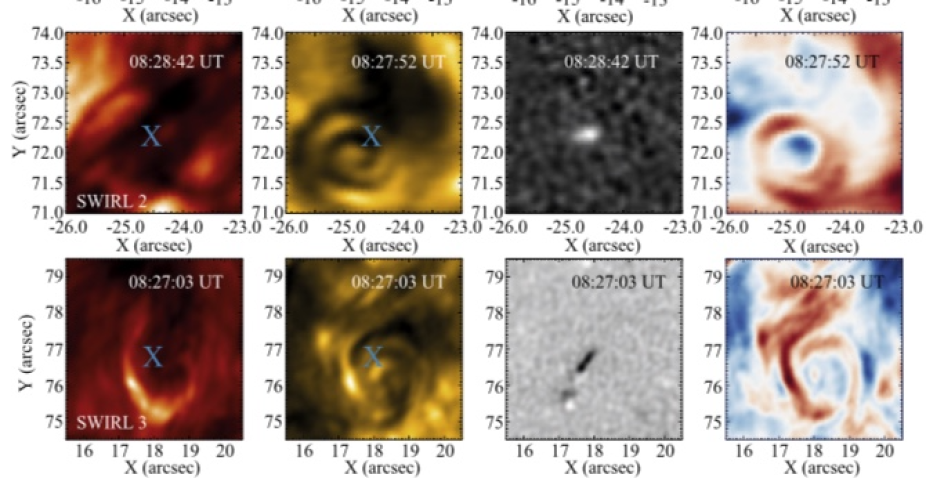Publication Name: ApJ First; HAO Author's Name: Philip Judge
We report observations of small-scale swirls seen in the solar chromosphere. They are typically 2 Mm in diameter and last around 10 minutes. Using spectropolarimetric observations obtained by the CRisp Imaging Spectro- Polarimeter at the Swedish 1 m Solar Telescope, we identify and study a set of swirls in chromospheric Ca II 8542 Å and Hα lines as well as in the photospheric Fe I line.

Snapshots in Hα 6563 Å, Ca II 8542.11 Å, and Stokes-V of Fe 6302 Å, and Doppler difference images constructed in Ca II 8542 Å showing selected swirling events.
We have three main areas of focus. First, we compare the appearance, morphology, dynamics, and associated plasma parameters between the Ca II and Hα channels. Rotation and expansion of the chromospheric swirl pattern are explored using polar plots. Second, we explore the connection to underlying photospheric magnetic concentration (MC) dynamics. MCs are tracked using the SWAMIS tracking code. The swirl center and MC remain cospatial and share similar periods of rotation. Third, we elucidate the role swirls play in modifying chromospheric acoustic oscillations and found a temporary reduction in wave period during swirls. We use cross-correlation wavelets to examine the change in period and phase relations between different wavelengths. The physical picture that emerges is that a swirl is a flux tube that extends above an MC in a downdraft region in an intergranular lane. The rotational motion of the MC matches the chromospheric signatures.